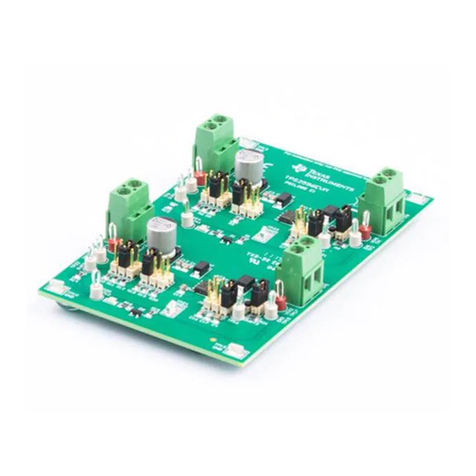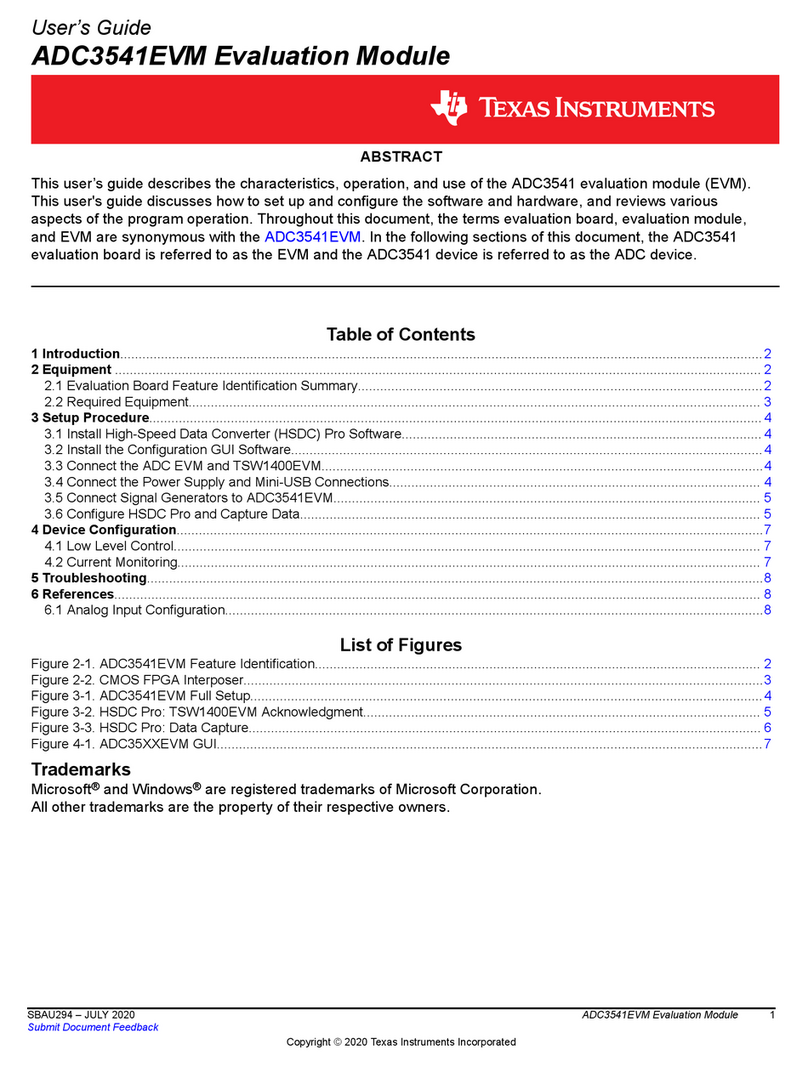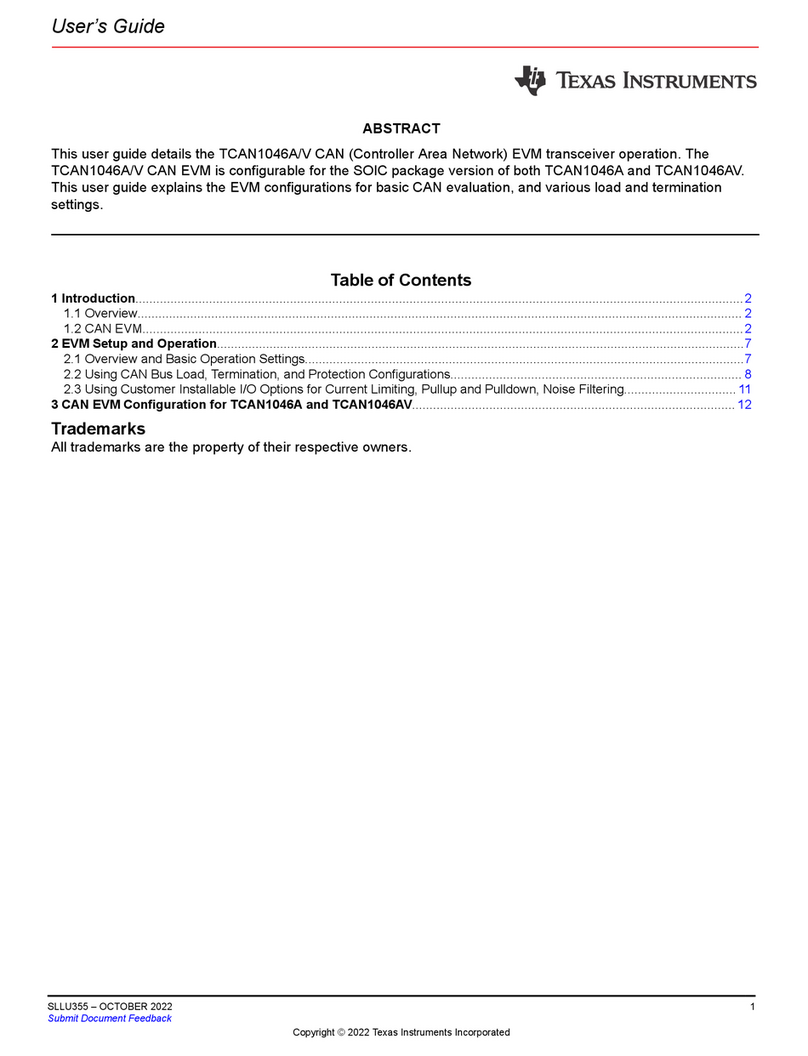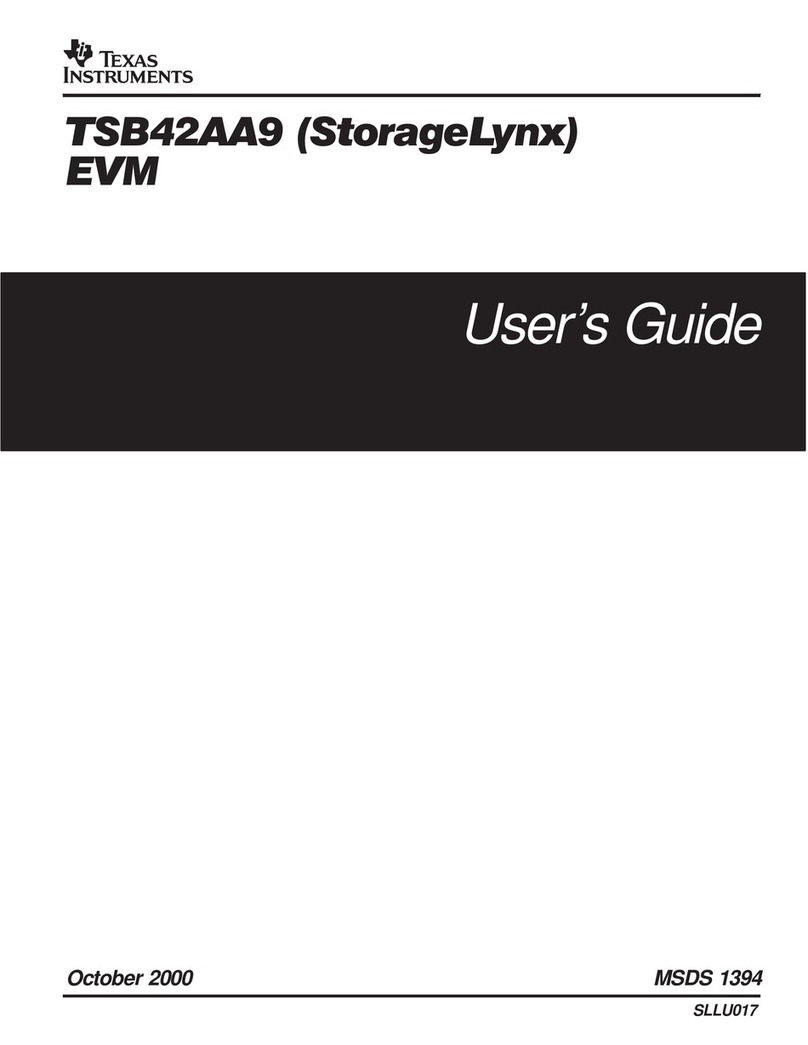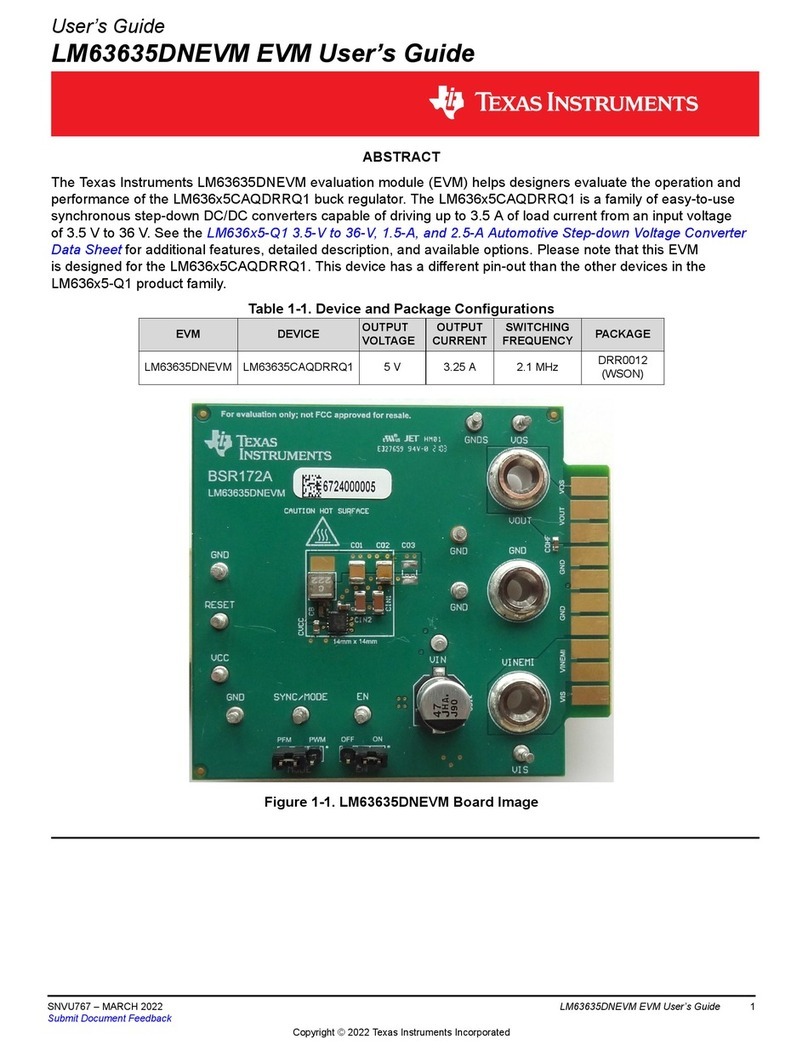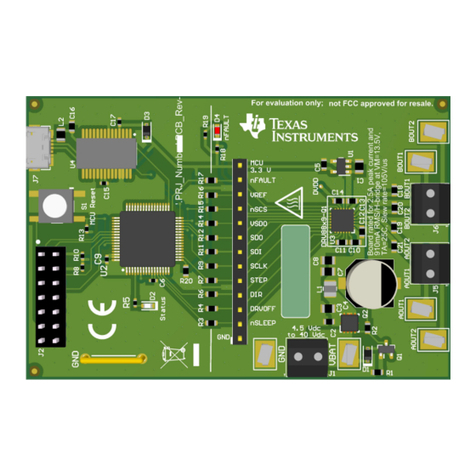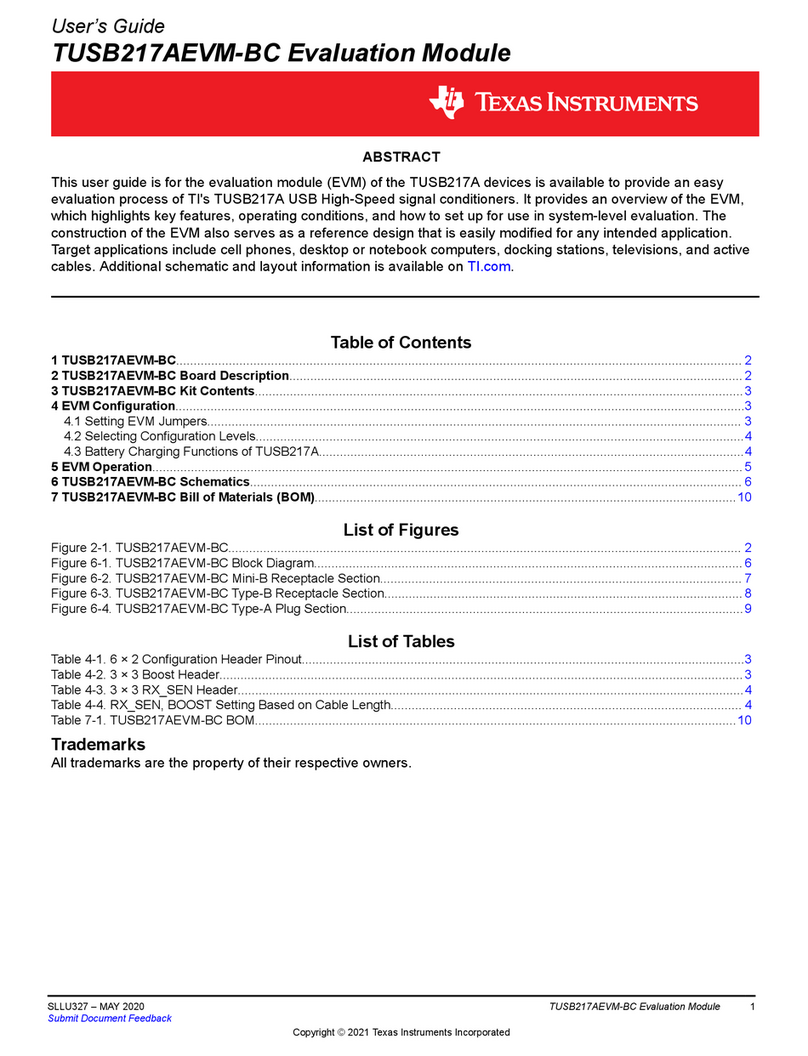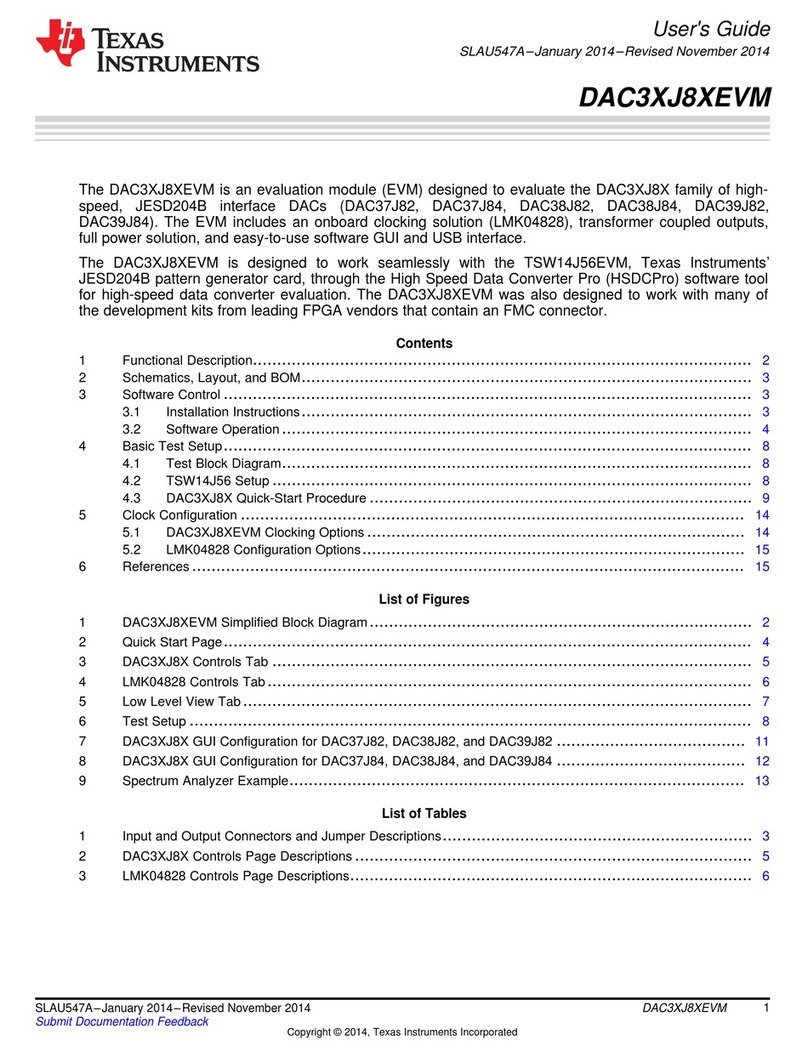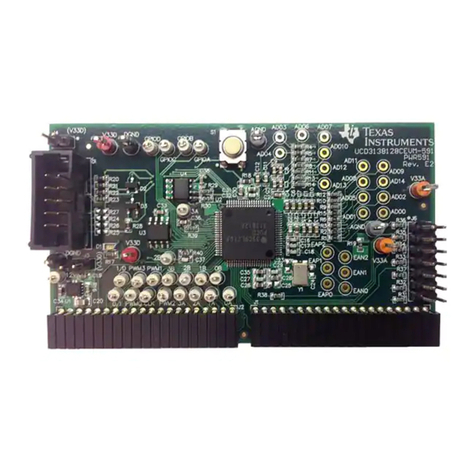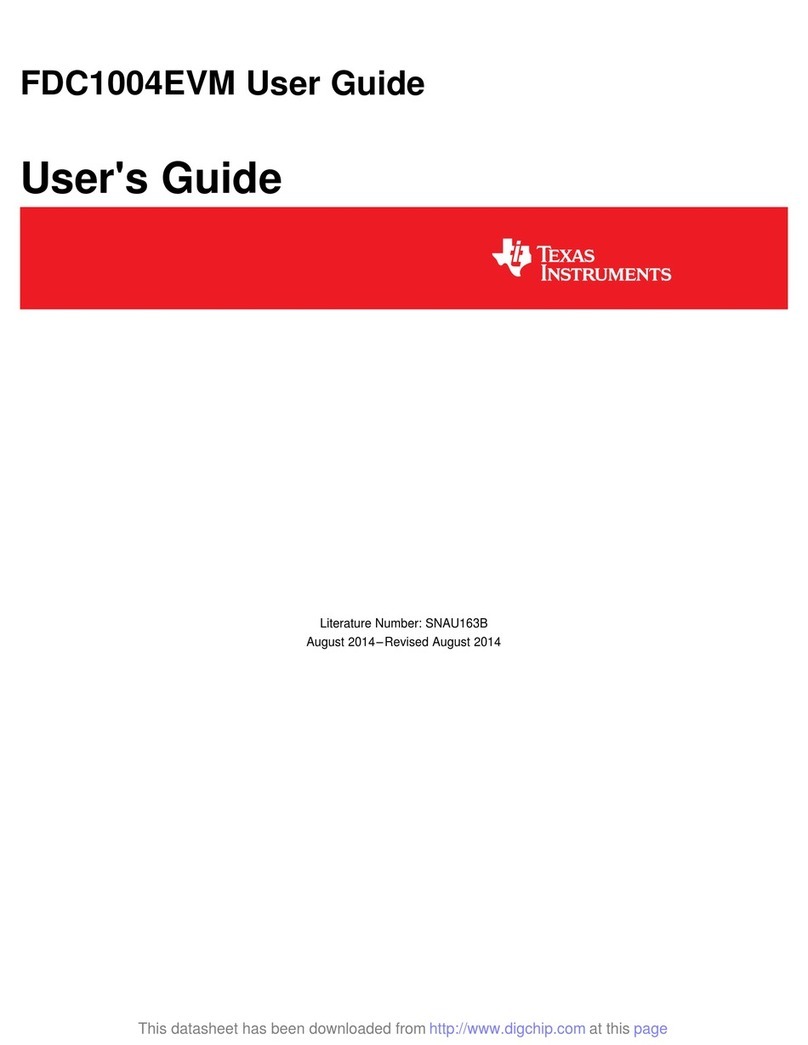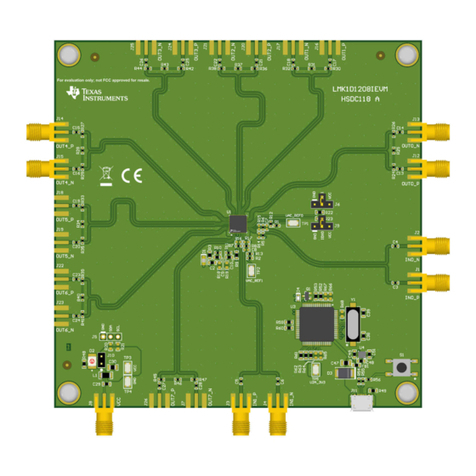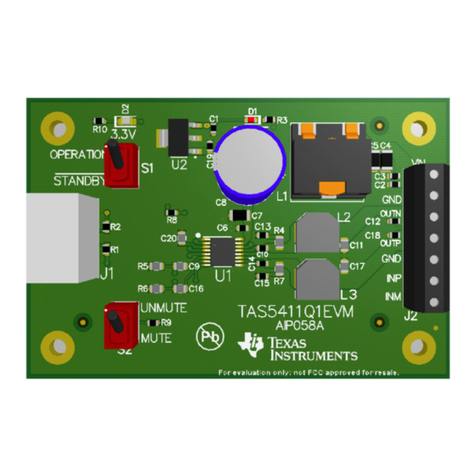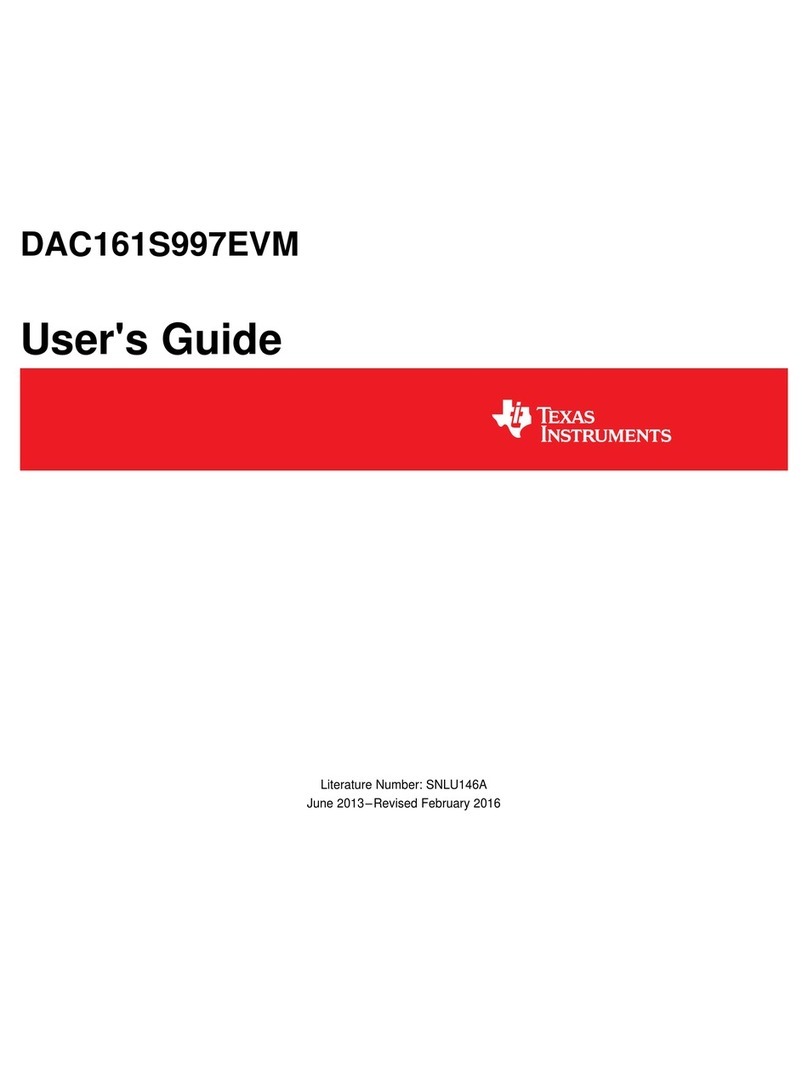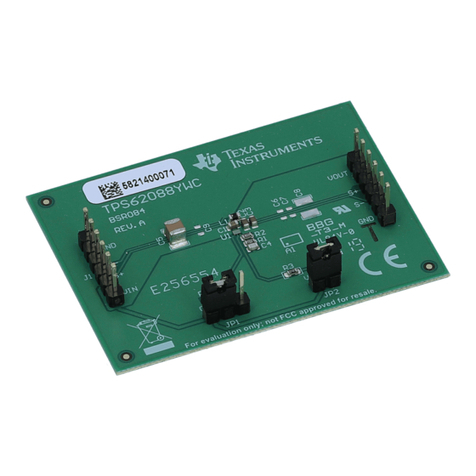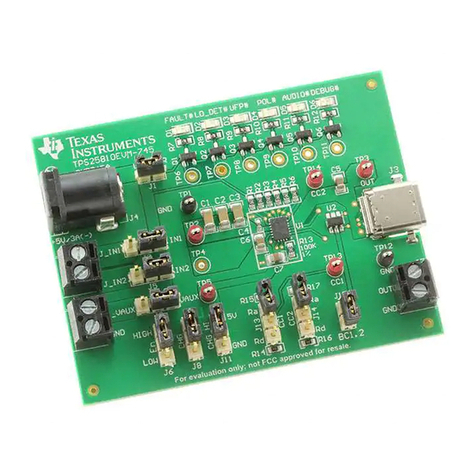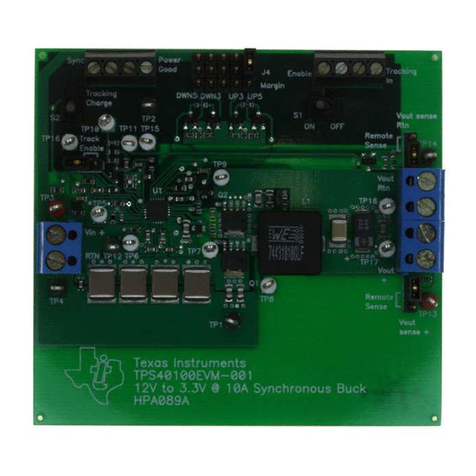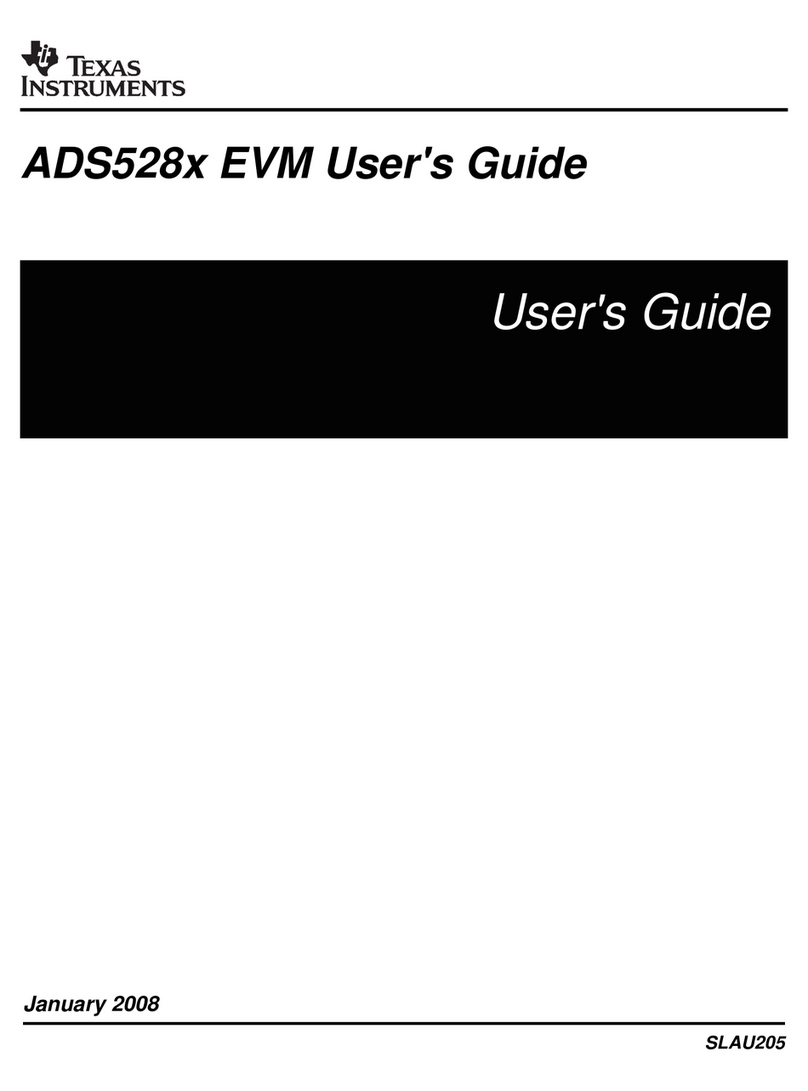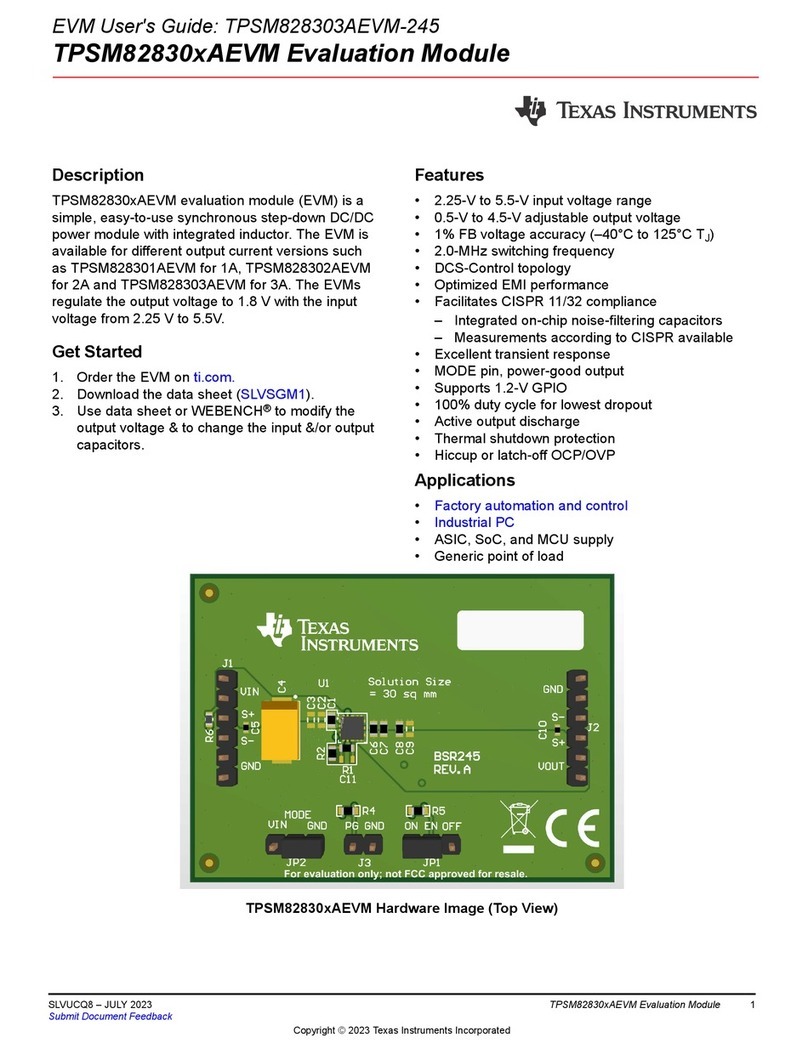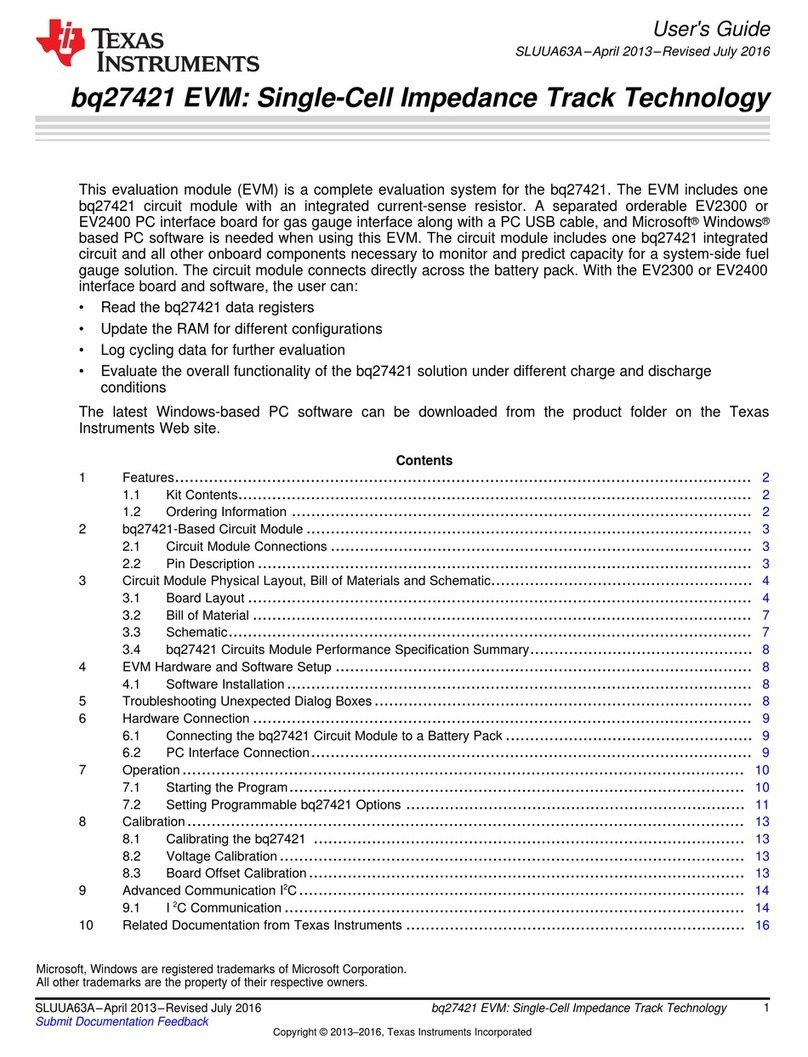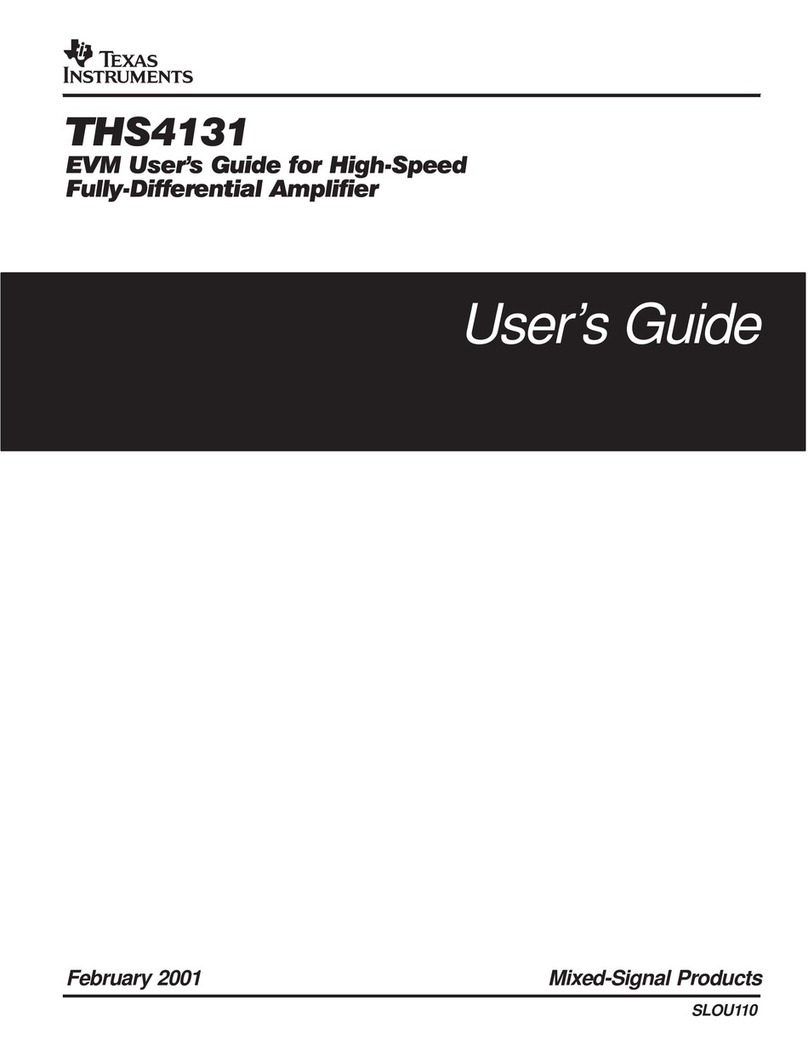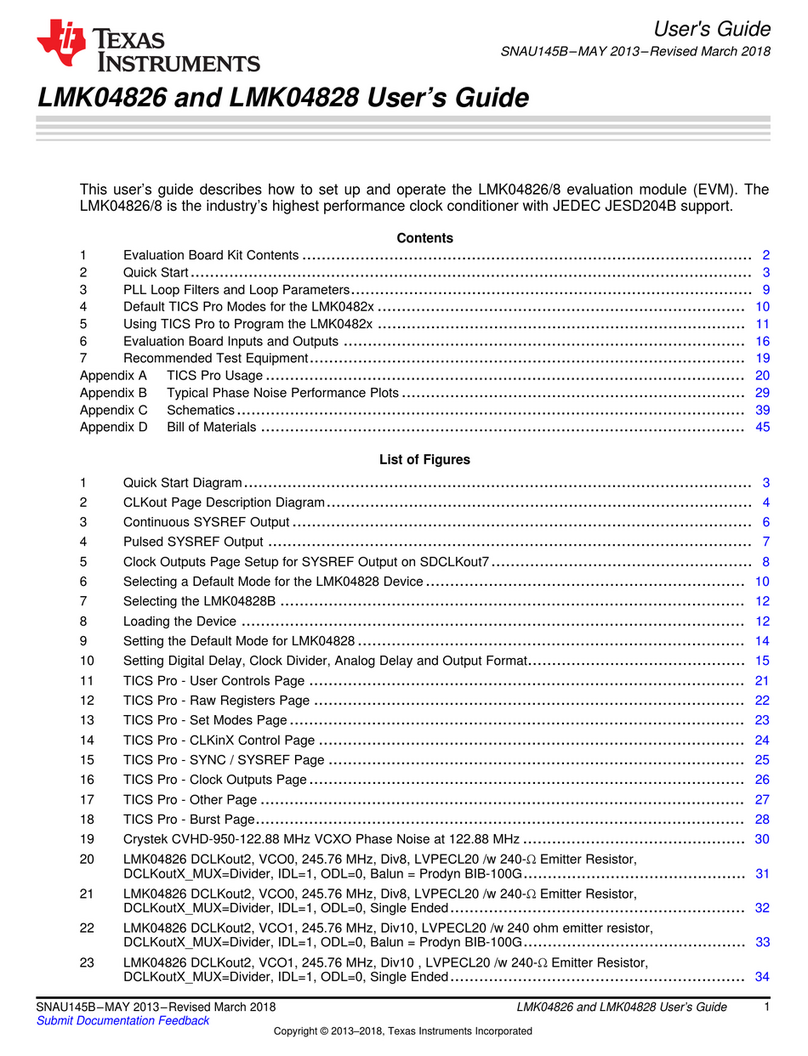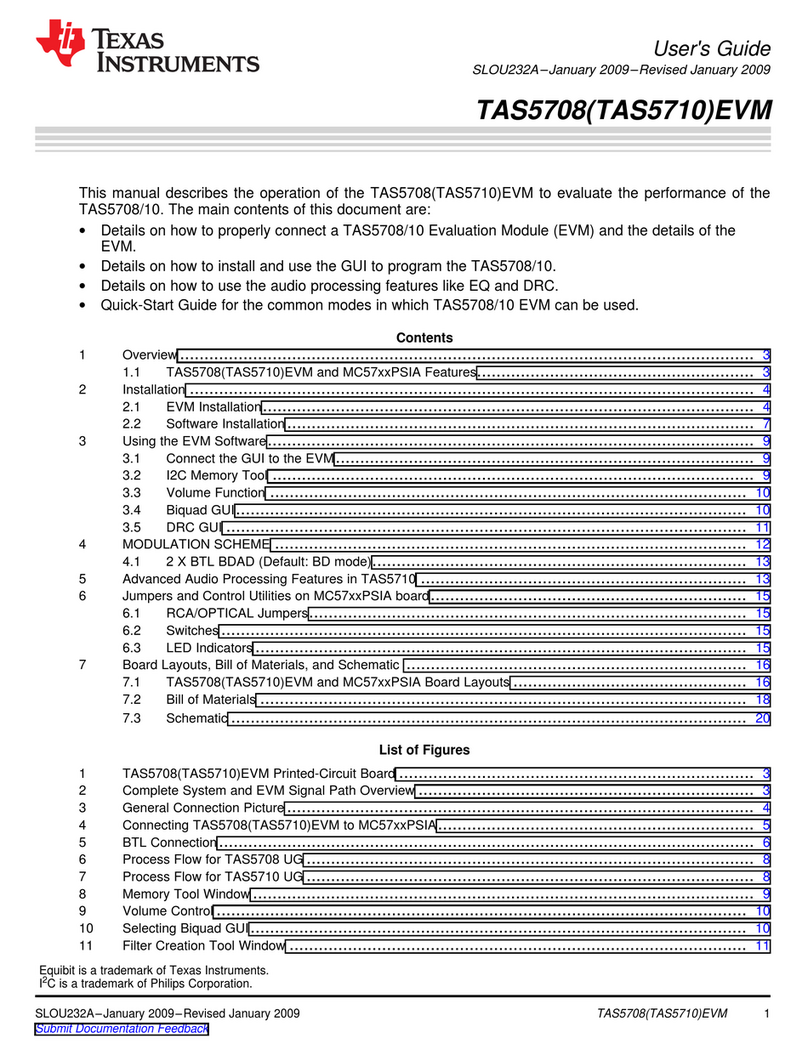
4 Software Selectable Options
5 Installing the EVM Control Software and USB Driver
Software Selectable Options
www.ti.com
ended CMOS signal source. The AUX IN allows the use of an external crystal in the frequency range of3.25MHz to 42MHz. The CDCE62005EVM provides a PC-board footprint for mounting a 5mm ×3,2mmSMD crystal. If the AUX IN is driven through the SMA connector, the on-board crystal must be removed,and R65 must be populated with a 0 ohm resistor. The CDCE62005EVM also provides support for drivingthe PRI REF signals from an on-board 5mm ×7mm crystal oscillator (U12).
The CDCE62005 provides up to five differential (LVDS or LVPECL) or ten single ended (LVCMOS) or anycombination of outputs up to 1.5 GHz (LVPECL). It operates as a jitter cleaner, or as a frequencysynthesizer, or both. An optional single ended output (AUX OUT) provides an LVCMOS copy of either thethird or fourth output. On the CDCE62005EVM the AUX OUT signal path has a footprint for an optionalcrystal filter (U13).
The CDCE62005 can use either a completely-internal loop filter, or a partially-external loop filter. Theloop-filter selection will affect the phase noise and loop stability of the PLL. If the CDCE62005 is to beused only as a frequency synthesizer, the completely internal loop filter option is recommended. If theCDCE62005 is used as a jitter cleaner, the partially external loop filter option is recommended, becausethis allows for lower loop bandwidths to be obtained using resistors and capacitors which are larger thanthe ones available on-chip.
The CDCE62005 options are selected by programming the on-chip registers. The CDCE62005 datasheetprovides the detailed information needed to configure and use this device.
Each of the five outputs of the CDCE62005 may be configured as an LVPECL, LVDS, or LVCMOS type.The CDCE62005 select/deselect the the 150 Ωload resistor required by the LVPECL output. Thecorresponding load resistor must be selected in the software interface when an output is configured asLVPECL.
The LVCMOS outputs can operate at frequencies up to 250MHz. The LVPECL outputs operate at up to1.5GHz (fan-out mode). The LVDS outputs operate at up to 800MHz.
The provided EVM Control Software (EVMCS) communicates with the CDCE62005 through a USBinterface through the CDCE62005 SPI port. The USB controller is normally powered over the USB cable,but can be optionally be powered by an external 5V DC adapter that is plugged into the additional powerconnector on the EVM. When the USB/SPI programming interface is available for use, the on-board LEDD25 is illuminated.
In addition to writing commands to the CDCE62005 SRAM while the board is powered, configurations canalso be stored in the on-chip EEPROM. This allows the EVM to start up in the desired configuration uponpowerup.
The CDCE62005 has a mode which permanently locks the EEPROM. After this mode is selected, theEEPROM contents within the CDCE62005 cannot be changed. This is useful when setting finalconfigurations.
The CDCE62005 EVMCS also allows device configurations to be saved into a configuration file (.INI),which can be loaded by the EVMCS at a later time to restore the saved settings.
The CDCE62005 EVMCS requires a Java Runtime Environment (JRE) to be installed. The latest JRE isavailable as a free download at http://java.com . Install the JRE first, before attempting to install theCDCE62005 EVMCS. To start the installation of the EVM software, double-click on the file named“ CDCE62005EVM-n_n_n-install.exe”, where n_n_n is the current software version number.
Note that the USB driver must be installed in the same installation folder as the EVMCS program file afterthe setup completes and the USB cable is connected (first time only).
After the setup wizard completes start the EVMCS from the start menu (Start →Texas Instruments Inc →CDCE62005 Software & Driver →CDCE62005).
2Low Phase Noise Clock Evaluation Module — up to 1.5 GHz SCAU024 – September 2008Submit Documentation Feedback
